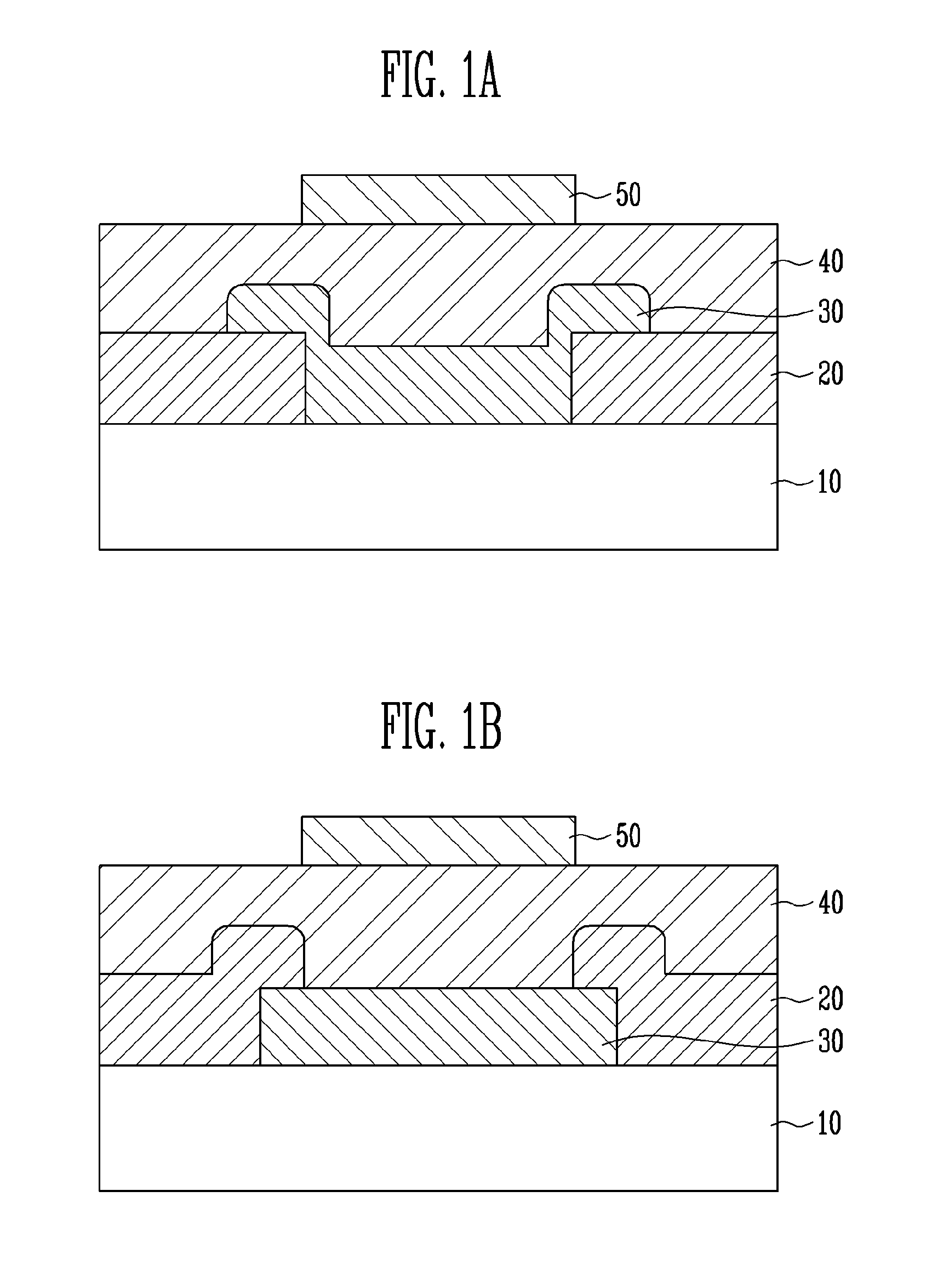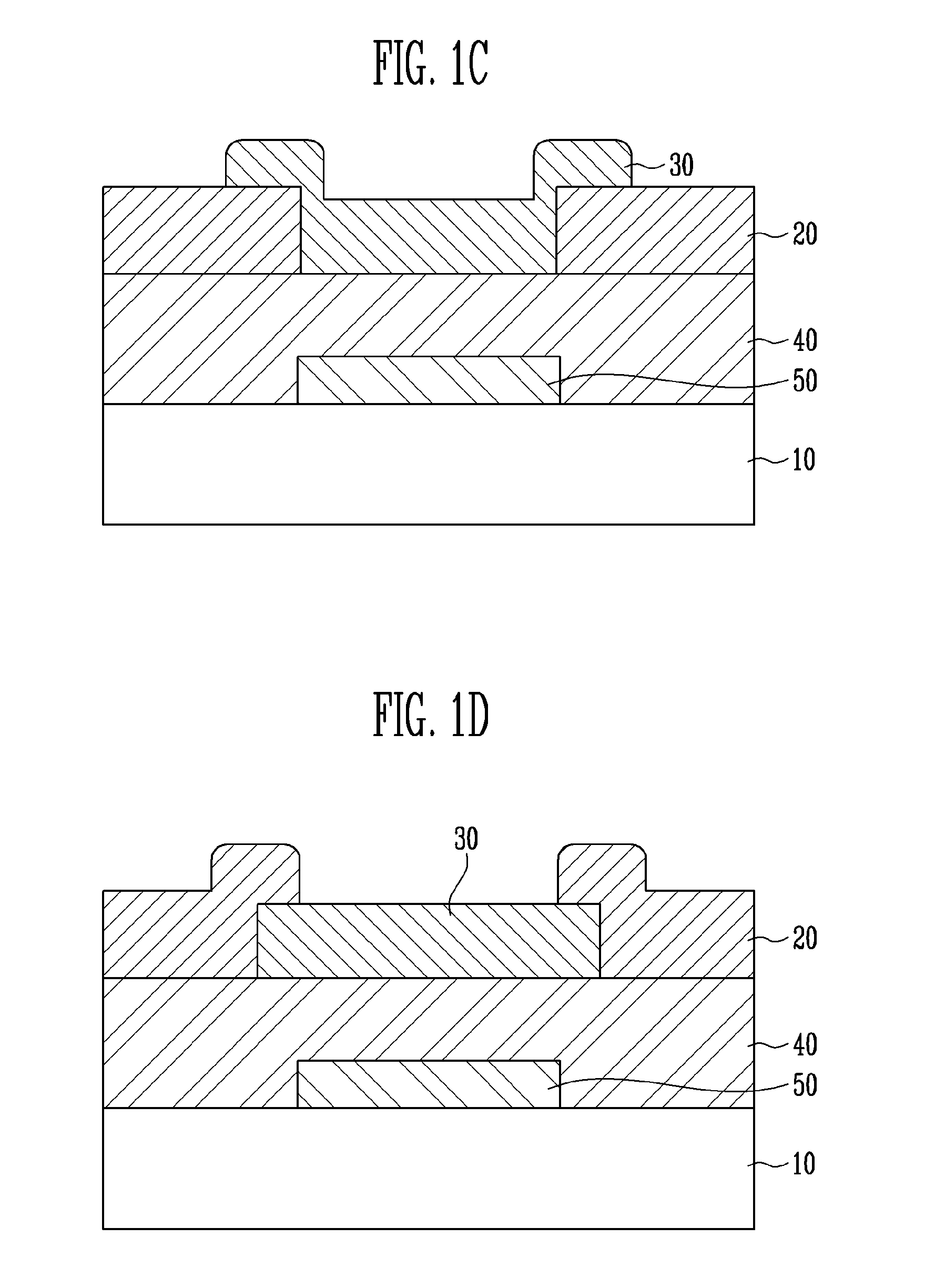Thin film transistor using boron-doped oxide semiconductor thin film and method of fabricating the same
a thin film transistor and boron-doped oxide technology, applied in the direction of transistors, semiconductor devices, electrical devices, etc., can solve the problems of device uniformity, irregularity in such devices, and technical restrictions, and achieve the effect of ensuring stability
- Summary
- Abstract
- Description
- Claims
- Application Information
AI Technical Summary
Benefits of technology
Problems solved by technology
Method used
Image
Examples
embodiment 1
[0064]Source and drain electrodes were deposited on a substrate to a thickness of 150 nm using ITO through sputtering, and then, the source and drain electrodes were etched and patterned using a mixed solution of phosphoric acid and nitric acid at a temperature of 50° C. Next, ZTO (Zn:Sn atomic ratio: 3:1) doped with boron of 3.5 at % was deposited on the source and drain electrodes at a normal temperature through sputtering to form a boron-doped ZTO channel layer to a thickness of 20 nm, and then, annealed at a temperature of 400° C. for one hour. Then, a channel protection layer was formed on the channel layer to a thickness of 10 nm using alumina. Next, the channel layer and the channel protection were wet-etched and patterned using a dilute HF solution. Next, a gate insulating layer was formed on the patterned channel layer and channel protection layer to a thickness of 190 nm using alumina through ALD at a temperature of 150° C., and then, the gate insulating layer was etched u...
embodiment 2
[0067]Source and drain electrodes were deposited on a substrate to a thickness of 150 nm using ITO through sputtering, and then, etched and patterned using a mixed solution of phosphoric acid and nitric acid at a temperature of 50° C. Next, a boron-doped ZITO channel layer was formed on the source and drain electrodes at a normal temperature through sputtering to a thickness of 20 nm using ZITO (Zn:In:Sn atomic ratio: 3:2:1) doped with boron of 3.5 at %, and then, annealed at a temperature of 200° C. for one hour. Next, a channel protection layer was formed on the channel layer to a thickness of 10 nm using alumina. Next, the channel layer and the channel protection layer were wet-etched and patterned using a dilute HF solution. Then, a gate insulating layer was formed on the patterned channel layer and channel protection layer using alumina to a thickness of 190 nm at a temperature of 150° C. through ALD, and then, the gate insulating layer was etched and patterned using a phosphor...
embodiment 3
[0068]A thin film transistor was fabricated in the same manner as in Embodiment 2, except that annealing was performed at a temperature of 300° C. for one hour upon formation of a channel layer. Characteristics of the fabricated transistor were estimated and the results are shown in FIG. 6. As can be appreciated from FIG. 6, an SS value was 0.29 and mobility was 13.96 cm2 / sV.
PUM
 Login to View More
Login to View More Abstract
Description
Claims
Application Information
 Login to View More
Login to View More - R&D
- Intellectual Property
- Life Sciences
- Materials
- Tech Scout
- Unparalleled Data Quality
- Higher Quality Content
- 60% Fewer Hallucinations
Browse by: Latest US Patents, China's latest patents, Technical Efficacy Thesaurus, Application Domain, Technology Topic, Popular Technical Reports.
© 2025 PatSnap. All rights reserved.Legal|Privacy policy|Modern Slavery Act Transparency Statement|Sitemap|About US| Contact US: help@patsnap.com



